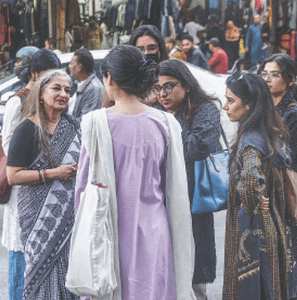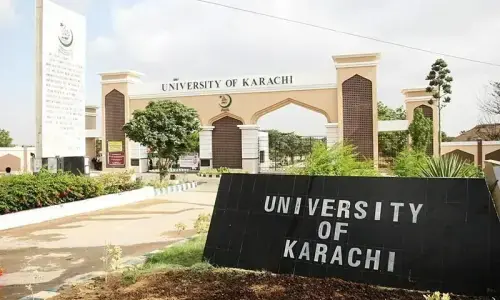
ADDRESSING a public meeting at Dhaka, East Pakistan (now Bangladesh), on March 21, 1948, the founder of Pakistan said “whether Bengali shall be official language of this province is a matter for the elected representatives of the people of this province to decide. ... But let me make it very clear to you that the state language of Pakistan is going to be Urdu and no other language. Anyone who tries to mislead you is really the enemy of Pakistan. Without one state language, no nation can remain tied up solidly together and function. Look at the history of other countries. Therefore, so far as the state language is concerned, Pakistani language shall be Urdu”.
Many — including scholars, politicians and media persons — question the logic and wisdom behind the decision that, as they put it, sowed the seeds of a separatist movement in former East Pakistan, based on a linguistic identity favouring the Bengali language. Later, Bengali too, alongside Urdu, was declared Pakistan’s national language though, the damage was done and it was irreparable, they argue.
Ours is a country very rich and diverse linguistically: A recent research says there are 73 languages and dialects spoken in Pakistan (‘How many languages are spoken in Pakistan?’ Dawn, March 13, 2017). Add to this the languages and dialects spoken in former East Pakistan (now Bangladesh). This linguistic diversity is indeed a treasure and for linguists it is a virtual linguistic paradise. Multilingualism is a boon. It not only provides one with the access to other communities, but also creates openness and discourages discrimination on the basis of race or language. Just like bio-diversity, we need linguistic diversity. But from a social, commercial and national point of view, it is a nightmare: how are different parts of the country going to communicate with each other, let alone doing business or create a consensus on national issues? So how can a country survive if it is divided into scores of economic, administrative and political regions on the basis of linguistic diversity? How can a country have 73 or so languages as national languages?
But this linguistic scene is neither rare not strange. Many parts of the world have linguistic diversity and history and linguistics tell that in such situations a common language is adopted to facilitate the communication. Victoria Fromkin (1923-2000), the renowned linguist, and her co-authors wrote in An introduction to language:“Many areas of the world are populated by people speaking divergent languages. In such areas, where groups desire social or commercial communication, one language is often used by common agreement. Such a language is called lingua franca” (the book is a bestseller and Fromkin was one of the authors).
The authors go on to inform that even in medieval times some languages served as common languages, especially for trade among different nations and ethnic groups. They say French was once “the lingua franca of the diplomacy”. Also, Latin and Greek were the “lingua francas of Christianity in the West and East respectively for a millennium”. Now English is often dubbed as “the lingua franca of the whole world”. So there has to be a language that can be used as a common language, or the so-called bridge language, to make the communication possible among the people who speak different languages.
In a multilingual, multiethnic country like Pakistan, there has to be a common language that is spoken and understood by a majority of its people and which can be used for communicating among the different regions and provinces of the country. It can create national unity and harmony and become a common cultural and social ground.
Had Jinnah favoured more than one language, say Bengali and Urdu, the logical question would have been why not three? Why not Punjabi along with Urdu and Bengali? Why not other languages spoken in Pakistan? Why should every language of Pakistan not be given the similar status? So why not declare each and every language of Pakistan a national language? The answer is: declaring any other language Pakistan’s national language would have opened Pandora’s box, as it did.
Urdu was the natural choice because it was Pakistan’s lingua franca, the only language spoken both in Eastern and Western provinces of Pakistan. Majority of Bengalis understood Urdu and they were not against Urdu. Only a small minority fomented hatred against Urdu. Unfortunately, some regional and secessionist politicians exploited the multilingual, multiethnic environment as that was the only way they could thrive.
Even today, Urdu is Pakistan’s lingua franca. It is spoken and understood in each and every region of the country, even in remotest areas, and hence the only choice. Whether you like it or not, the mainstream media, both print and electronic, has made Urdu even more popular and people from different parts of Pakistan communicate with each other in Urdu. Politicians address the public rallies in Urdu. Urdu is understood by 95 per cent of Pakistanis, though hardly eight per cent use Urdu as mother tongue. In fact, now Urdu is used as first language by majority of Pakistanis and many, including this writer, prefer Urdu to their mother tongue.
Secondly, the Quaid had allowed the provinces to adopt any language as official language and Urdu was to be used to strengthen the federation, an idea that Article 251 of Pakistan’s 1973 constitution clearly describes.
Published in Dawn, December 25th, 2017

































